Actionable Data
Apply what matters. Test it under stress. Track the results. Adapt.

000 - CH 17 (not done)
000 - NSCA’s Essentials of Tactical Strength and Conditioning Chapter 17 - Physiological Issues Related to Fire and Rescue Personnel

000 - CH 16
000 - NSCA’s Essentials of Tactical Strength and Conditioning Chapter 16 - Care and Rehabilitation of Injured Tactical Populations

000 - CH 15
000 - NSCA’s Essentials of Tactical Strength and Conditioning Chapter 15 - Evidence-Based Approach to Strength and Power Training to Improve Performance in Tactical Populations

000 - CH 14
000 - NSCA’s Essentials of Tactical Strength and Conditioning Chapter 14 - Aerobic Endurance Exercise Techniques and Programming

000 - CH 13
000 - NSCA’s Essentials of Tactical Strength and Conditioning Chapter 13 - Plyometric, Speed, and Agility Exercise Techniques and Programming

000 - CH 11-12
000 - NSCA’s Essentials of Tactical Strength and Conditioning Chapter 11-12

000 - CH 10
000 - NSCA’s Essentials of Tactical Strength and Conditioning Chapter 10 - Periodization for Tactical Populations

000 - (Copy) (Copy)
000 - NSCA’s Essentials of Tactical Strength and Conditioning Chapter 9 - Development of Resistance Training Programs

000 - CH 9
000 - NSCA’s Essentials of Tactical Strength and Conditioning Chapter 9 - Development of Resistance Training Programs
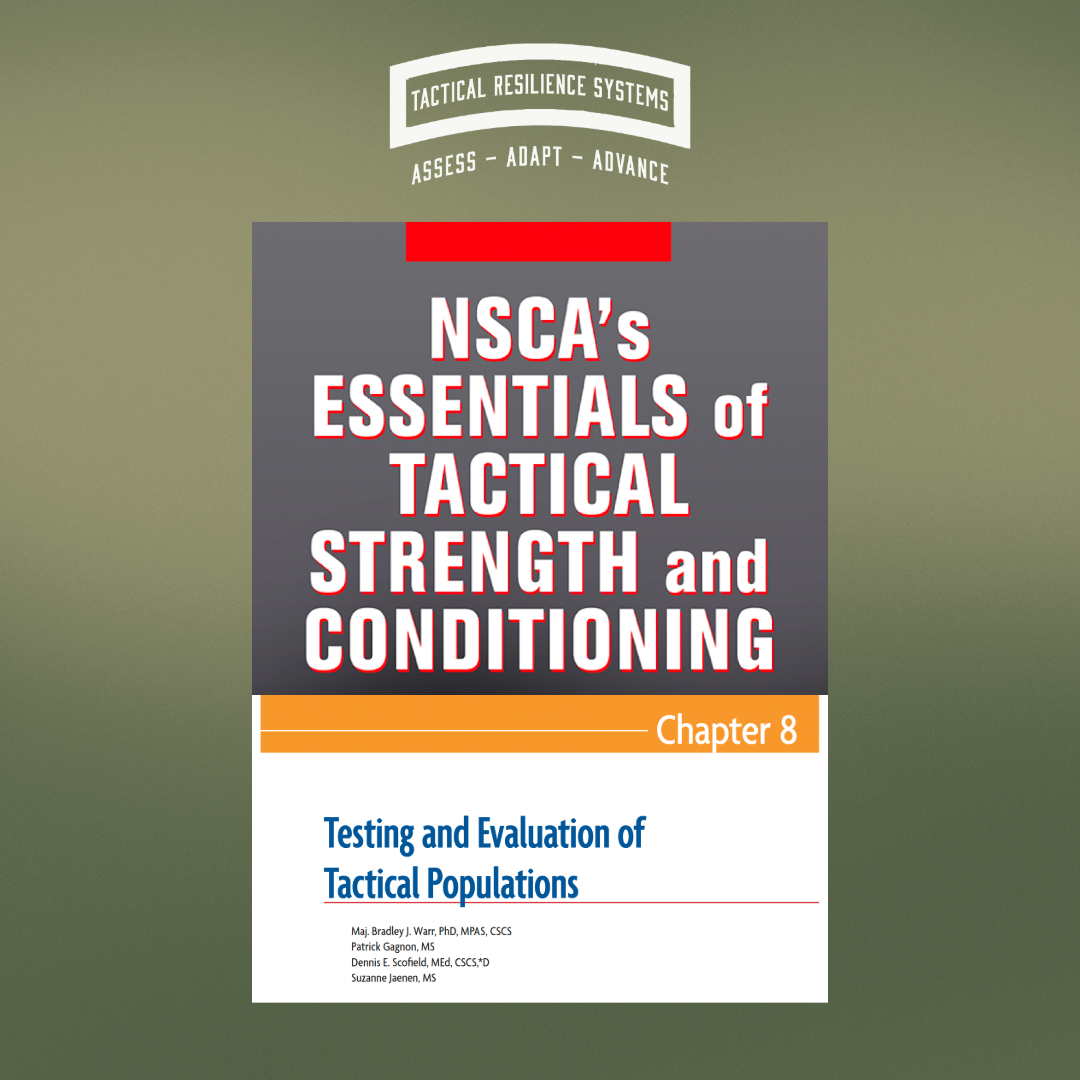
093 - Measure What Matters: Building Better Tests for Tactical Readiness
092 - NSCA’s Essentials of Tactical Strength and Conditioning Chapter 8 - Testing and Evaluation of Tactical Populations

091 - Boost or Bust: Making Sense of Ergogenic Aids
091 - NSCA’s Essentials of Tactical Strength and Conditioning Chapter 7 - Ergogenic Aids
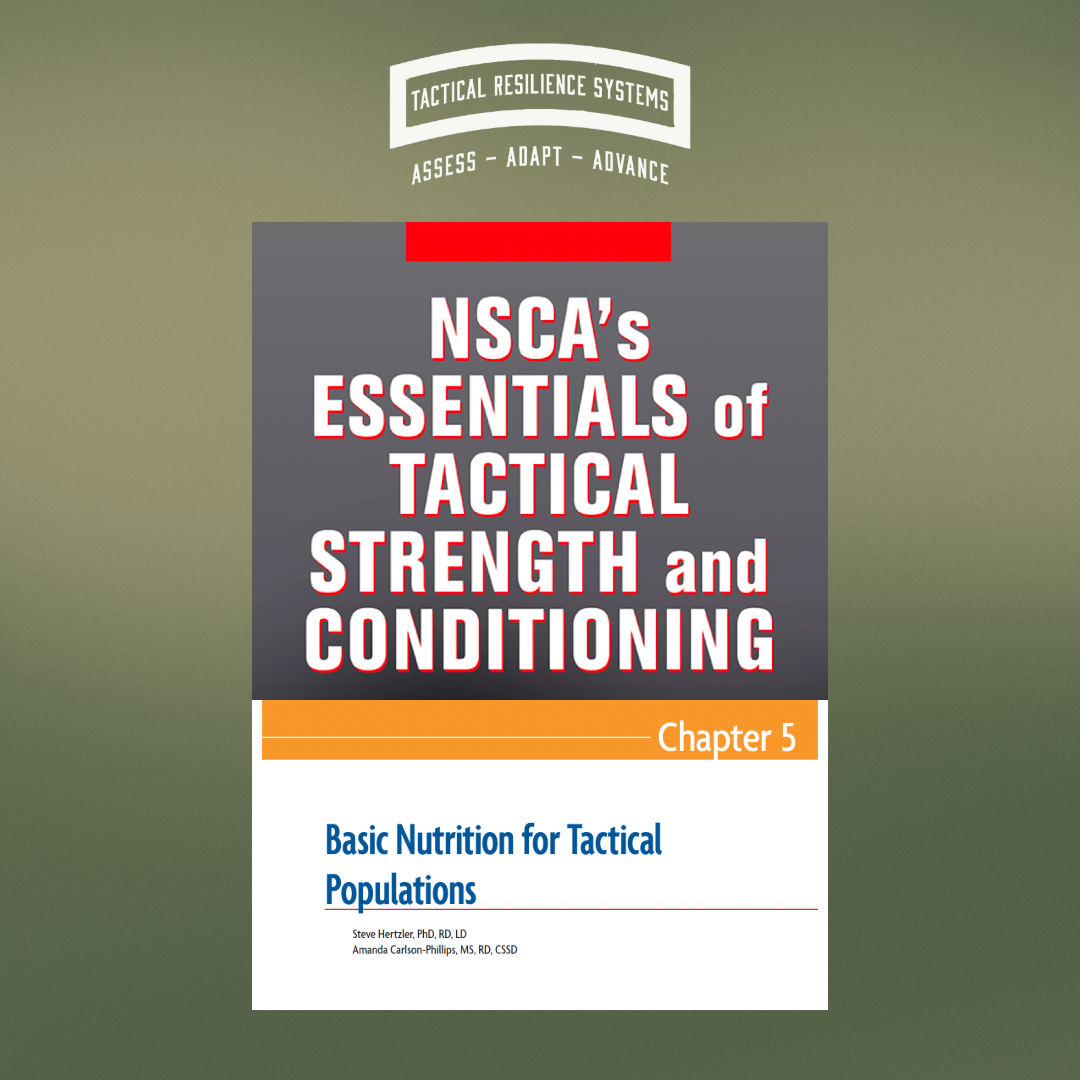
090 - Fuel to Function: Tactical Nutrition That Holds the Line
090 - NSCA’s Essentials of Tactical Strength and Conditioning Chapter 5 - Basic Nutrition for Tactical Populations
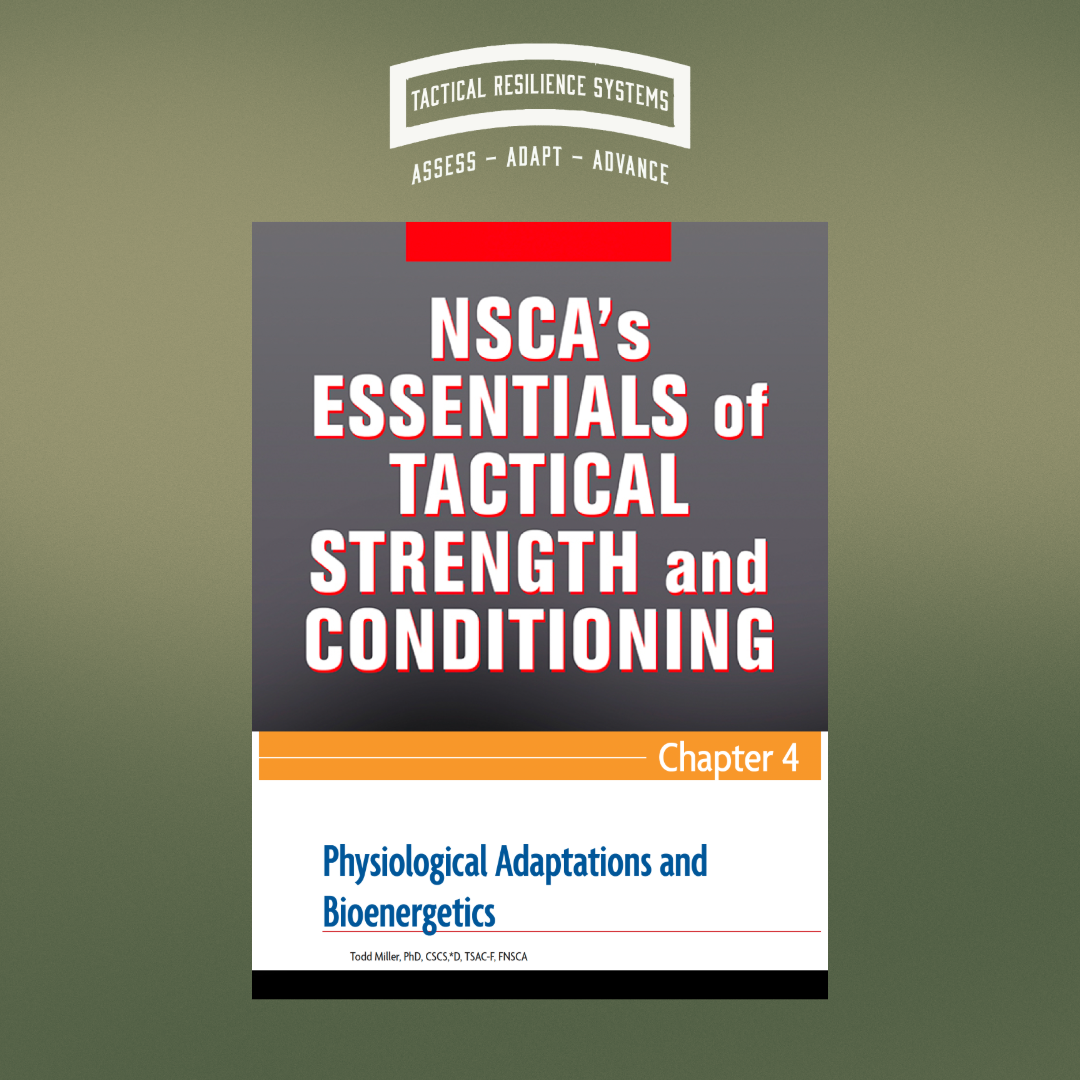
089 - Fuel, Fire, and Form: Unlocking the Physiology That Drives Tactical Performance
089 - NSCA’s Essentials of Tactical Strength and Conditioning Chapter 4 - Physiological Adaptations and Bioenergetics
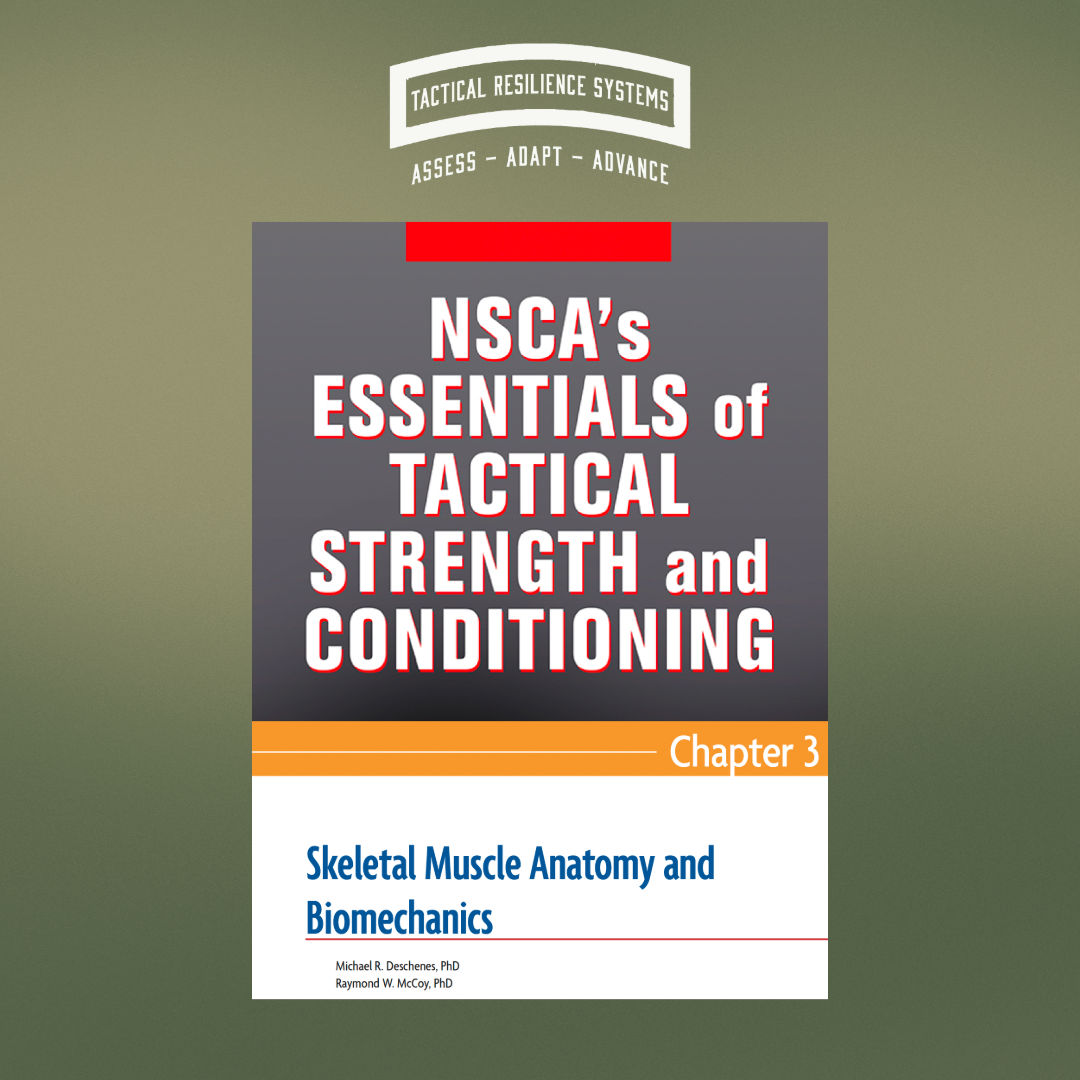
088 - Muscle That Matters: Power with Purpose
088 - NSCA’s Essentials of Tactical Strength and Conditioning Chapter 3 - Skeletal Muscle Anatomy and Biomechanics

087 - Heart of the Mission: Why Cardiac Output is a Tactical Priority
087 - NSCA’s Essentials of Tactical Strength and Conditioning Chapter 2 - Cardiopulmonary and Endocrine Responses and Adaptations to Exercise

086 - Green Protocol: Scalable Strength for the Operational Athlete
086 - Tactical Barbell - Green Protocol: Section 1 (pg. 6-29)

085 - Building Readiness, Not Just Fitness: What It Means to Train Tactical
085 - NSCA’s Essentials of Tactical Strength and Conditioning Chapter 1 - Tactical Strength and Conditioning: An Overview
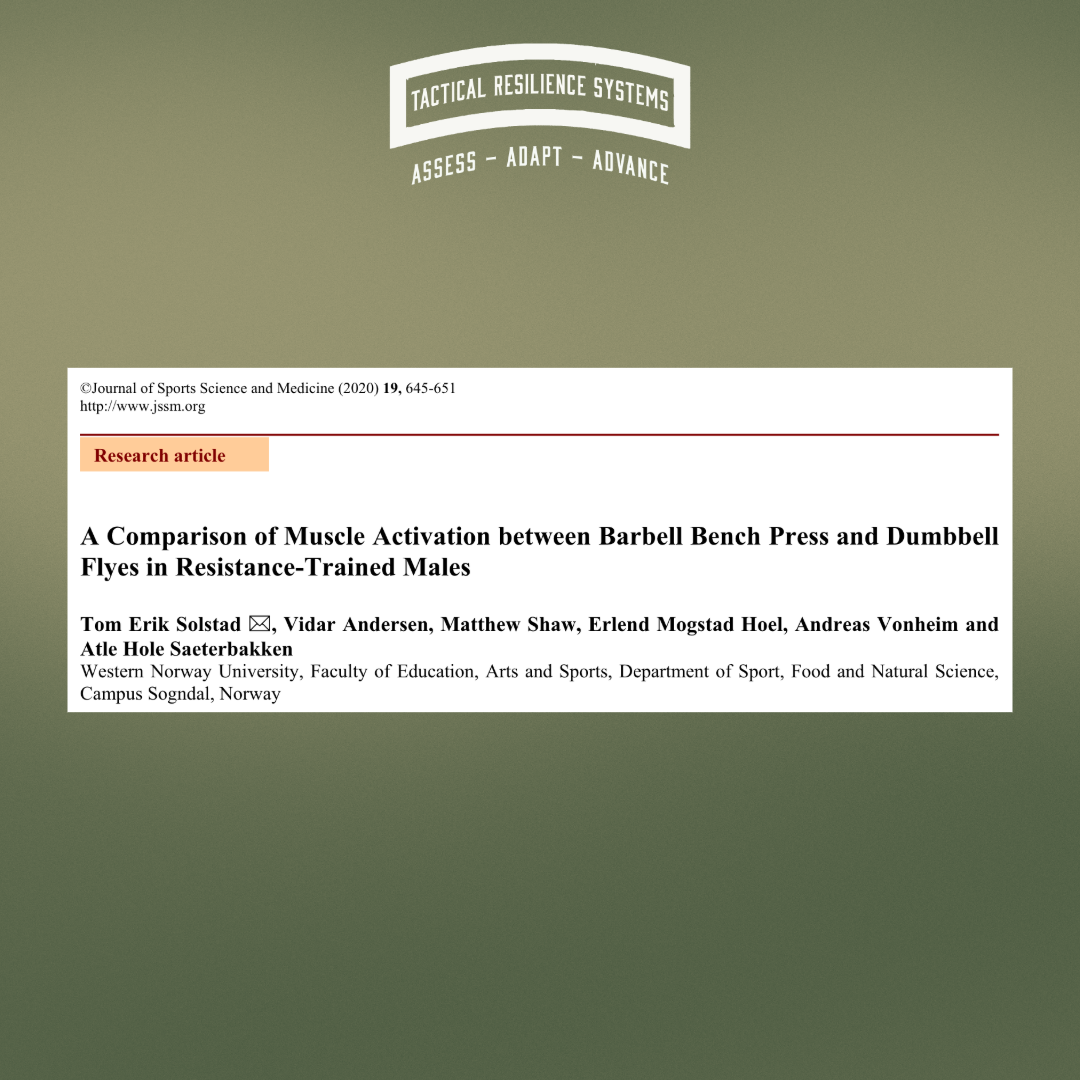
084 - Bench Press vs. Dumbbell Flyes: Targeted Muscle Activation and Tactical Programming
084 - A Comparison of Muscle Activation between Barbell Bench Press and Dumbbell Flyes in Resistance-Trained Males.

083 - The Protein Paradox: Hypertrophy vs. Longevity in the Carnivore Diet
083 - The protein paradox, carnivore diet & hypertrophy versus longevity. Short-term nutrition and hypertrophy versus longevity